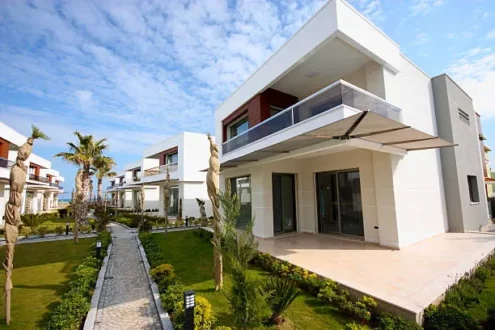Seminyak has been a favourite Bali base for years, and there’s a reason it keeps showing up in villa searches. If you’re considering a villa holiday there, here’s why it works so well — and one example of a villa estate that shows what’s possible in the area.
1. Beach, dining and shopping in a compact area
Seminyak combines several things that don’t always show up together:
-
A broad, walkable stretch of beach
-
Plenty of cafés, restaurants and bars in easy reach
-
Boutiques, spas and small galleries scattered through the streets
You can spend a day moving between the sand, a coffee spot, a massage and a sunset drink without ever needing to organise a big day trip. For groups, that means people can peel off and do their own thing, then easily regroup later.
Because so much is accessible on foot or with short rides, you’re not spending half your holiday in traffic or negotiating complicated transport for every outing.
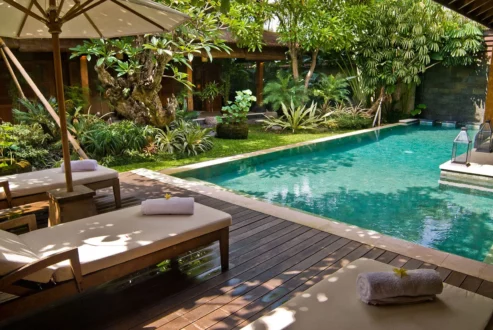
2. A villa base that suits different energy levels
One of Seminyak’s strengths is how well villa life and city life blend together.
You can wake up to quiet gardens and a private pool, then step out to busy streets whenever you want more buzz. That works nicely for mixed groups where some people want early nights and others love late ones, or where grandparents and young children need naps while other adults go exploring.
When you choose the right lane or side street, you can be close to:
-
Beach clubs and sunset spots
-
Family-friendly cafés and casual eateries
-
Shops and markets for souvenirs or forgotten essentials
Yet still return to somewhere that feels like your own space.
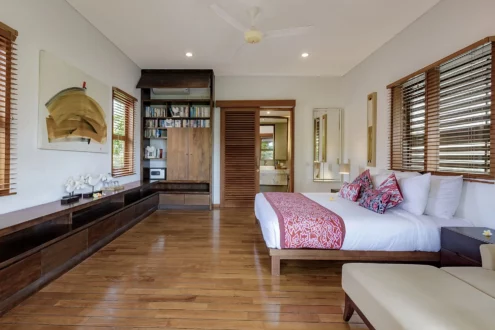
3. An example of a Seminyak villa estate to know
To see how this looks in practice, it’s useful to look at a real-life estate in the area.
Villa Kinaree Estate is one of few luxury villas in Bali complex in Seminyak that can be configured as a larger estate with up to 10 bedrooms. It combines two villas, each with its own pool and generous indoor–outdoor living areas, set in landscaped gardens a short walk from the beach in a sought-after part of town.
Independent descriptions highlight the estate’s flexible bedroom setup, two-pool layout and location within easy reach of dining, shopping and the sand – which is exactly the combination many groups are looking for in Seminyak.
Whether you ultimately stay there or not, looking at estates like this gives you a clear benchmark: walk-to-beach location, enough bedrooms and bathrooms for comfort, and spaces that let different ages and energy levels coexist happily.
When you’re comparing options, keep those three things in mind and you’ll be much closer to picking a Seminyak base that feels like a genuine upgrade on a standard hotel stay.
Choosing a villa can feel overwhelming: endless listings, pretty pools everywhere and lots of “sleeps 10+” promises. The trick is to match the villa to the kind of trip you’re actually taking, not just the number of beds.
1. City weekend, beach break or “stay put” retreat?
First, get clear on what kind of trip this is.
-
City weekend: You’ll be out most of the time, eating in restaurants and exploring. Look for smaller, well-located places rather than huge villas far from the centre.
-
Beach or countryside break: You’ll likely spend long stretches “at home”. Here, outdoor space, pool comfort and shaded seating become more important than being right next to nightlife.
-
Retreat or “stay put” week: If the whole point is to slow down, prioritise a villa with generous communal areas, multiple corners to sit in, and enough privacy that people can go quiet when they need to.
Once you’ve named the trip type, a lot of villas will drop off the list by themselves.
2. Think about layout, not just bedroom count
A villa that “sleeps 12” can mean very different things:
-
Six proper bedrooms with their own bathrooms
-
Four bedrooms plus a sofa bed, plus a bunk in a hallway
-
Rooms spread across multiple levels, or grouped in one wing
For groups, layout is just as important as size. Ask yourself:
-
Who needs the quietest rooms? (Often grandparents, very young children or early risers.)
-
Are there separate hang-out spaces for different ages and energy levels?
-
Are any rooms only accessible by steep stairs or outside paths that might be tricky at night?
If you can, sketch a quick floor plan based on the listing to see how people will actually move and live in the space.
3. Consider location, staff and “hidden” extras
Finally, look beyond the villa walls.
-
Location: How long will it really take to get to the beach, cafés or the old town on foot? Saving money on a cheaper villa far away sometimes means spending more on taxis and losing time.
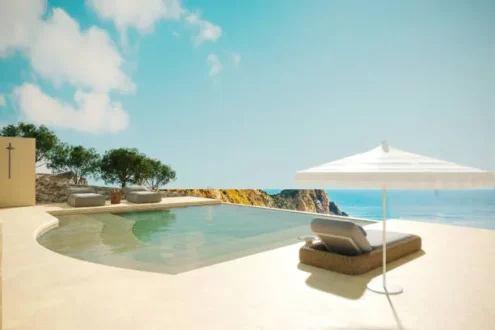
-
Staff and services: Some villas come with daily housekeeping or even a manager and cook. Others are totally self-catered. Decide how much you want to handle yourselves.
-
Extras that matter to you: Reliable Wi-Fi, a decent kitchen, air-con in bedrooms, blackout curtains, pool depth, parking, safety features for kids… these small details can make or break the stay.
Choosing the right villa isn’t about finding a “perfect” one. It’s about finding a place whose layout, location and level of service match the real people you’re travelling with.
Group villa holidays can be amazing: shared meals, late-night chats, kids playing in the pool while adults actually relax. They can also turn into spreadsheets and drama. These five tips help keep things calm.
1. Nominate a main organiser (and keep money transparent)
Every group needs one main organiser – but not a dictator.
-
One person handles the villa booking and main communications.
-
Key decisions (dates, budget range, destination) are discussed together first.
-
Costs and payment deadlines are clearly written down and shared with everyone.
Set up a simple shared document or group chat message where you list:
-
Total cost of the villa per night
-
How that breaks down per person or per family unit
-
When deposits and balances are due
Being up-front about money from the start avoids awkwardness later.
2. Make decisions in the right order
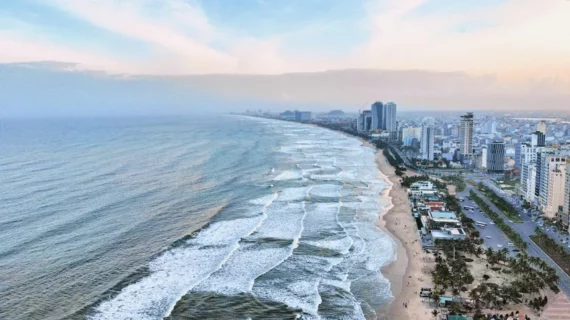
To avoid endless back-and-forth, make decisions in this order:
-
Dates: What works with school calendars, busy periods at work and flight prices?
-
Rough area: Beach town trip, countryside, city edge? Narrow it to two or three realistic options.
-
Budget: A clear per-night range and whether that includes cleaning fees and local taxes.
-
Villa shortlist: Only now start seriously comparing places.
If you jump straight into browsing villas without agreeing dates and budget, you’ll waste hours on properties that turn out to be unavailable or too expensive.
3. Use your villa team to reduce work
Once you’ve booked, lean on the villa’s team or local contact as much as possible.
Many owners or managers are happy to help you:
-
Arrange airport transfers
-
Book in-villa massages or private chefs
-
Suggest local restaurants, beach clubs or markets
-
Help with birthday cakes, decorations or special meals

Instead of each person doing their own research from scratch, collect questions and send them in one batch. The answers will be more targeted and more accurate than whatever the group finds scattered across random websites.
Remember: the aim of a group villa holiday is not to “see everything”. It’s to have a handful of memorable experiences and a lot of time where everyone can simply relax together.

